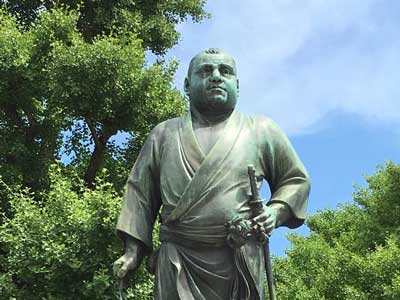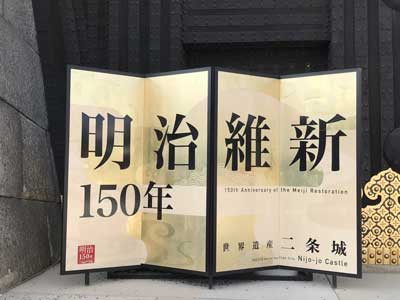The period called the Meiji Restoration was the beginning of the opening up of Japan. Social movements of the time saw their chance to fully go for the revolution now. In 1867-1868, the Shogunate was faced with widespread anti-government sentiments and accusations that the regime had failed to prepare Japan for the threat of the West. This lead to the last Tokugawa shogun resigning, and power was reverted to Emperor Meiji.

The End of the Edo Era
The turning point for the city of Edo, actually for all of Japan, was the arrival of Commodore Matthew Perry’s Black Ships. They arrived at Edo-wan (now known as Tokyo Bay) in 1853. Perry’s US Navy expedition demanded that Japan open itself to foreign trade. This was done under the pressure of modern weaponry that the Japanese didn’t yet possess at the time. When the Americans came back a few years later, the Japanese accepted trading with them grumbling. The condition was that they would stay in the harbor of Yokohama, far away enough from Edo to make the shogunate feel comfortable.
The Meiji Restoration

The handover of power didn’t go completely without violence though. A few thousand loyalists to the shogunate put up one last resistance in the Battle of Ueno that they ended up losing. The emperor moved the Imperial seat from Kyoto to Edo in 1868. Hereafter, the city was to be named Tokyo which literally means ‘Imperial capital in the East’.
The Meiji period is often called a restoration as this was the time when the Emperor was finally restored back to power. It was, however, not so much a restoration as it was a revolution. Japan had a lot of catching up to do. As when the rest of the (Western) world moved ahead full steam in the 17th, 18th, and 19th centuries.
The age of Enlightenment, expansion, and the Industrial Revolution all happened while Japan still lived as though it was the 1600s. But if there is one thing the Japanese people are good at, it is closely observing how things are done by other people. Then they will copy that, and make it better in the process.
The Iwakura Mission
In order to get a good idea of what was new in the rest of the world, the Japanese undertook the Iwakura Mission. On this mission, politicians toured European and US cities with a ship to learn how things were done there. This led to very smooth and quick industrialization of Japan in the years after.
It was not only the industry that was modernized and Westernized but also aesthetics such as fashion and architecture. Furthermore, the political and judicial systems and even food were touched by the revolution. The military was also modernized, and in Western fashion, Japan also started building a larger empire. They quickly annexed several new territories, which finished with the end of WW2. The Meiji period ended with the death of Emperor Meiji in 1912 and was followed by the Taisho period.
Your Japan Tour
As seasoned Japan experts, we create perfect Japan package tours including destinations connected to the Meiji Restoration. Check out our group tours and private tours, or contact us to start planning your unforgettable holiday to this fascinating country. Japan is full of once-in-a-lifetime experiences, culture, history, nature, and delicious food!